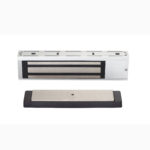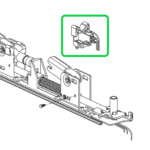 I was recently teaching a class for a group of fire inspectors and this Quick Question came up:
I was recently teaching a class for a group of fire inspectors and this Quick Question came up:
Are access-controlled egress doors no longer allowed by the model codes?
If I had to name the one code section that has caused me the most pain and suffering during my career, this section would be the one. I still vividly remember sitting with the members of a state building code board and confidently explaining the meaning of the section, then walking out of the room in defeat when I was unable to convince them of the intent of the code. I’m going to guess that was close to 15 years ago, and I have dedicated countless hours to unraveling misinterpretations of the section since then.
The fire inspectors in my class were enforcing an adopted state fire code based on the 2015 edition of NFPA 101 – Life Safety Code. In this edition, there is a section called Access-Controlled Egress Door Assemblies, and in the 2012 edition of the I-Codes, there was a very similar section called Access-Controlled Egress Doors. If you look for these sections in the subsequent editions of the model codes, they seem to have disappeared. This led some of the code officials in my session to think that access-controlled egress doors would no longer be allowed once their state adopted a new code.
What is (or was) an access-controlled egress door, anyway? These code sections describe an electrified lock that is released by a sensor that detects a building occupant approaching the door on the egress side. The sections in each of the model codes also require the lock to be released by an auxiliary button, with detailed requirements for this switch prescribed in the codes. The locks must unlock upon activation of the fire alarm/sprinkler system, and upon loss of power. Current model codes also require the locks to be listed to UL 294 or UL 1034.
 The electrified lock that is typically used in this type of system is an electromagnetic lock, where there is an electromagnet in a housing mounted on the frame, and a steel armature mounted on the door. When the magnet is energized, it bonds to the armature and locks the door. To unlock the door requires external release devices such as the sensor and auxiliary push button mandated by the model codes.
The electrified lock that is typically used in this type of system is an electromagnetic lock, where there is an electromagnet in a housing mounted on the frame, and a steel armature mounted on the door. When the magnet is energized, it bonds to the armature and locks the door. To unlock the door requires external release devices such as the sensor and auxiliary push button mandated by the model codes.
The sections addressing access-controlled egress doors were not removed from the model codes, they were renamed to more accurately describe an electrified lock that is released by a sensor (typically a mag-lock). Here is a screenshot from the redline edition of the 2015 IBC/IFC – similar changes were made to the 2018 edition of NFPA 101:

For more information about the requirements of the model codes for locks released by a sensor, refer to Type 3 on the Special Locking Arrangements page of this site.
You need to login or register to bookmark/favorite this content.








Lori, This has been made even easier to comprehend in the 2018 IFC in section 1010.1.9.9 Sensor release…. where it says…..shall be permitted on doors located in a means of egress in any occupancy except Group H where installed and operated in accordance with all the following criteria………
Yes! That was another change that was made because the limitations on occupancy types in previous editions didn’t really make sense. It’s interesting (to me – haha) to look at the original I-Codes and see how the electrified hardware requirements have changed. Many of the changes were proposed by BHMA.
– Lori